He’s had it since he was a kid, and he’s never opened it.
hen J.J. Abrams’ beloved grandfather took him to Tannen’s Magic Shop in New York City, the young boy discovered a mysterious box covered in question marks. For more than four decades Abrams has kept this box, this manifest indeterminacy, as a constant reminder. He’s talked about it often, including during a 2007 TED Talk. The box reminds him that mysteries can propel so many things. And the journey is about more than the destination.
Related: If You’re Not Happy, You’re Not Successful—So Enjoy the Journey!
Abrams has heavy black-rimmed glasses and tousled hair. He generally wears a tie and a smile, and he embraces each fan he meets as if that fan was his best pal from grade school. He patiently answers questions from self-described nerds because these are his people. He’s still that person who loves all things Star Wars, all things fantasy.
He is as familiar to the public as any of the actors who’ve worked on his projects. Journalists eagerly approach him, hoping for a morsel to feed their insatiable readers. After a press conference for the Showtime series, Roadies, an excited reporter rushes the stage where Abrams is chatting with a few people.
“Do you know who Rey’s parents are?” she blurts out—referring to the mysterious female protagonist of the blockbuster Star Wars: The Force Awakens.
He feigns a startled look, puts his hand across his heart and looks at our small group. Then he smiles and, serene as Yoda, replies.
“Yes, I do.”
Encouraged by his response, she presses him for more info, even though everyone there realizes he’s not about to reveal one of the biggest mysteries in the newest addition to the Star Wars saga.
The woman prods, “Isn’t it hard to keep a secret like that?”
No, Abrams assures her. It is not. The co-creator and co-producer, respectfully, of cryptic projects such as Lost (ABC) and Cloverfield loves keeping a good mystery going. It’s part of what has made him Hollywood’s most recent golden boy, the steward of the Mission Impossible, Star Trek and Star Wars film franchises.
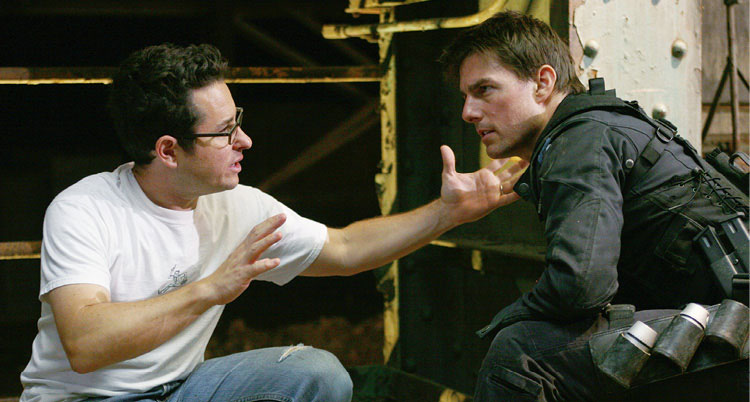 PARAMOUNT/AF ARCHIVE/ALAMY
PARAMOUNT/AF ARCHIVE/ALAMY
Abrams has discovered that the path to happiness is being able to indulge in what brings him joy and, of course, it’s earned him a sizable living in the process. The first film in the Star Wars sequel trilogy became the third-highest-grossing film of all time. The HBO series Westworld, where Abrams is an exectuive producer, is the biggest hit for the premium cable network since Game of Thrones and is poised to fill that gap once GoT ends its run.
Westworld producer Lisa Joy remembers coming to Abrams as a junior writer with an idea that was “so crazy, so big and so genre—and it came from a girl right out of school.”
From the moment she met Abrams, he seemed open to any and all ideas. He seemed to share the young writer’s excitement.
“A lot of producers would have said, ‘Why don’t you do something more timid? Something more feminine.’ But J.J. just cares about good ideas, and he’s so supportive of new voices,” Joy says. “I love working with him. I’m a huge fan of his work. It was an incredible experience when I first met him, and now, years later, to be collaborating with him is fantastic.”
His ability to juggle a successful career—he’s a writer, producer, composer and businessman—while also being a devoted friend, husband and father, is quickly becoming Hollywood legend.
Related: The Best Career Advice, From Successful People Who Made It to the Top
During my visit to one of his productions a few years back, an actor marveled at how Abrams was able to direct him in a scene while also taking a call about his son’s sports team without missing a beat.
Abrams started 2016 by launching a miniseries for Hulu starring James Franco based on Stephen King’s 11.22.63 and teamed with Cameron Crowe—who wrote Say Anything, Jerry Maguire and Almost Famous, to name a few—for Roadies, which debuted last June but has since been canceled. A sci-fi thriller with the working title (as of press time) God Particle was recently revealed to be a sequel to the hit Cloverfield movies. And those are just the finished projects. He still has an array of other movies and shows already in production.
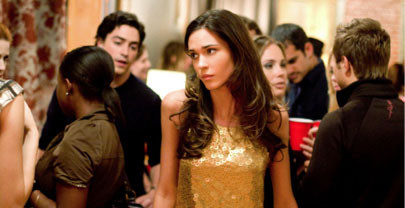
ABC/AF ARCHIVE/ALAMY
“I work with hardworking people who know what they are doing,” Abrams says. “The benefit of that is I learn every day how I can be a better producer, a better writer, a better storyteller.”
That learning curve continues once he’s off the clock as well. Abrams met his wife, Katie McGrath, in 1996 in New York and the couple married two years later. The public relations executive was a former aide to the late Sen. Ted Kennedy and has helped shape Abrams’ political interests. They have three children—Henry, 19; Gracie, 17; and August, 11—and live in a posh $14.5 million mansion in Pacific Palisades, California, not far from where Abrams grew up.
“The thing that keeps me balanced is going home every day and getting my ass kicked by my kids.”
“The thing that keeps me balanced is going home every day and getting my ass kicked by my kids. And having a wife who is the most supportive-slash-brutally-honest person I’ve ever met,” Abrams says. “So that is the first lens through which I see the world.”
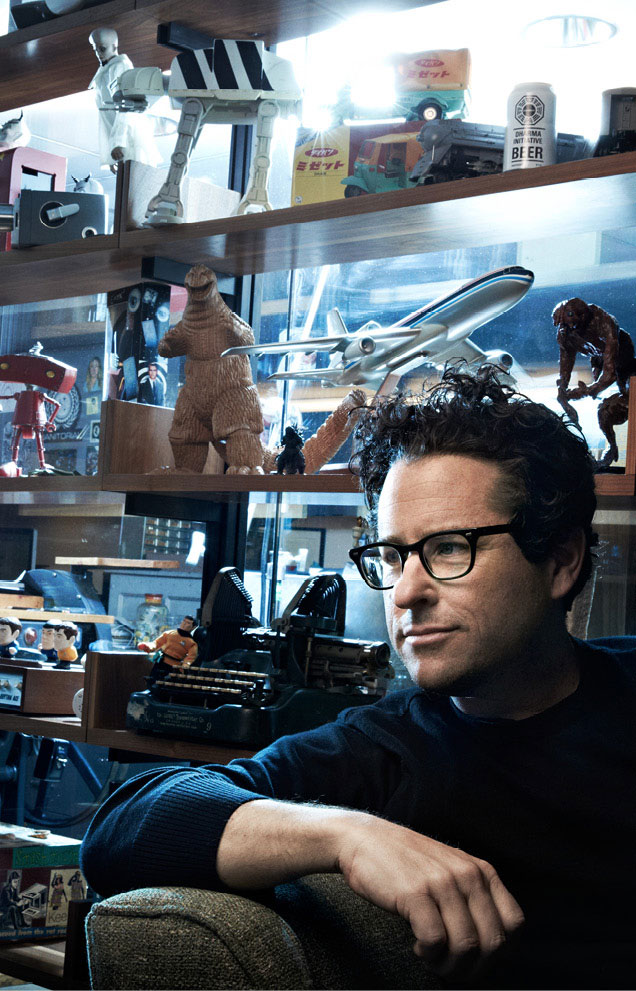
ART STREIBER
Abrams has told interviewers that it was his wife who convinced him to take on the Star Wars reboot because of his love of the franchise. When I ask what the best advice McGrath had ever given him, Abrams stutters and laughs about not being able to pin down just one. He says he takes her advice every day.
“I wish she was wrong every once in a while,” Abrams jokes. “But she’s always right and it never stops.”
His knack for appreciating strong women has earned Abrams a special spot in the crowded universe of TV and film. Every one of his projects, from the insightful, intelligent title character in Felicity to the tough Star Wars survivor/fighter Rey, has included important, nontraditional roles for women.
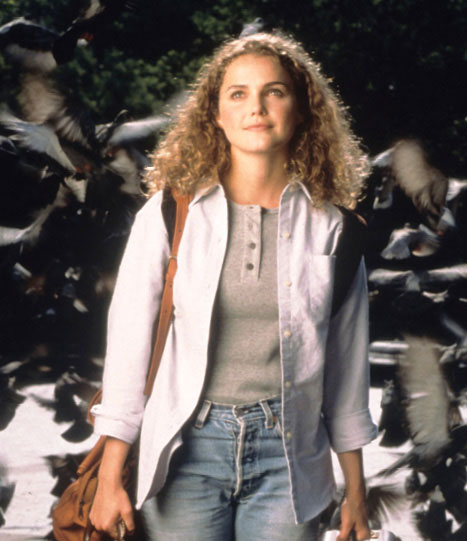
TOUCHSTONE/PHOTO 12/ALAMY
Veteran St. Louis Post-Dispatch critic Gail Pennington has followed his career for decades. She’s become an Abrams expert and noted his dedication to diverse characters. “J.J. may have joked that Alias (ABC) was conceived as Felicity as a spy, but Sydney Bristow was very much her own person. The same is true for Olivia on Fringe and certainly for the women on Lost,” Pennington says. “It’s always clear that J.J. both appreciates women and respects them, two things that aren’t always true from male writers.”
When I asked 11.22.63 executive producer Bridget Carpenter about Abrams, she told me that her answer might be a little surprising.
“It’s incredible to work with somebody with such a quick, agile brilliant mind, so that’s not surprising,” Carpenter says. “But what is thrilling about working with J.J. is how empowering a person he is.”
Abrams had an incredible clarity about what he wanted from the project, she says, but after communicating that to Carpenter, he set her free.
“He trusted me with this story, and that’s a great way to feel about your boss,” Carpenter says. “He’s not a micro-manager; he’s a big-picture person. He’s deeply available, but empowered me to follow my vision. It takes a strong artist to be that collaborative and he inspired me to do better than my best.”
***
Abrams has a base command at Bad Robot Productions, a company he formed in 1998. (Fans of Bad Robot shows will know the logo at the end features Abrams’ two eldest children, then 2 and 3, saying “Baaad Robot.”) The production company has a magical-playground quality to it. Even the name on the Santa Monica brick building offers a sleight of hand: The National Typewriter Company. The 18,000-square-foot creative workshop and production facility has three floors of editing bays, a screening room and set, a recording studio, prop-making studio, small event venue and Abrams’ personal suite.
Abram’s private bathroom, hidden within a secret opening in the wall, is entered by pulling on a book titled Louis Tannen’s Catalog of Magic. In a private lounge, custom shelves house a remarkable collection of movie toys and souvenirs. It looks like an extreme clubhouse for geeks. Abrams laughs at the comparison. He talks about the music room, the art studio, the silk screeners and even embroiderers who work in the offices.
“It’s all about the possibilities…If you have an idea, you can do it.”
“It’s all about the possibilities. It’s not about the artifice or the esthetic, which I love. But when you dig deeper, it really was designed to be a place of industry and creativity,” he says. “You don’t have to send out for anything. If you have an idea, you can do it there. And that’s so crazy satisfying. And that’s the geekiest thing about it.”
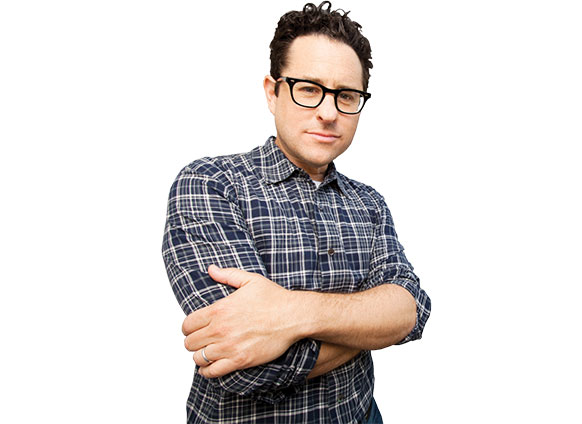
WARNER BROS./GETTY IMAGES
But it’s not all about making the weirdest T-shirt, hat or poster. It’s about creating an atmosphere where the magic happens. When talking to reporters at the Television Critics Association press tour last year, he was asked about weaving magic and mystery into his work.
Related: 6 Scientifically Proven Creativity Boosters You’ve Probably Never Heard of
“To be clear, I don’t ever approach any project thinking, Well, here we go, another mystery box. It was just an example of how, for me, great stories work where they pose questions that make you lean in, that make you want to know what comes next,” Abrams says. “A lot of times when we see movies or watch shows that spoon-feed information, you find yourself often leaning away. You don’t want to know the information.”
Abrams may be an admitted techno-geek, but he still relies on the basics when it comes to storytelling.
“Obviously, while I love what technology allows in terms of visual effects and efficiency in storytelling on the screen, what matters more and most of all is the idea and the writing and the execution of that,” Abrams says. “I usually write longhand at first. And there’s something about it—the tactile, tangible nature of it—that just feels like I’m feeling the stuff more than I am. You know, when there’s a deadline and it’s crazy, of course the MacBook Pro is the key. But it’s something that I think ultimately just comes down to what is that idea you’re scribbling with that pencil.”
Abrams has racked up considerable credits for writing, directing and producing projects for TV and movies. He seamlessly glides through both worlds with relative ease. He’s even composed the theme songs for many of his projects.
He talks about waking up in the middle of the night, as parents of toddlers know so well, and sneaking upstairs to compose the song for Fringe (Fox) while his then 2-year-old son August went back to sleep.
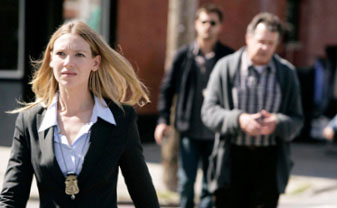
TOUCHSTONE/AF ARCHIVE/ALAMY
“It was about getting an idea and lightning striking,” Abrams says. “And not that it’s particularly great or anything, but it was just one of those things that I knew if I didn’t do it right then I would forget it, and then it would never be there again.”
Inspiration for his creative endeavors can pop up at any time. He spoke to The New Yorker about how an idea for a mystery novel came to him when he was at an airport and saw a paperback novel sitting on a bench. While others might have simply passed it by, Abrams picked it up and saw someone had written in pen, “To whomever finds this book—please read it, take it somewhere, and leave it for someone else to find it.”
Abrams says it made him smile. “This optimistic, romantic idea that you could leave a book with a message for someone. It reminded me of being in college, and seeing notes that people would leave in the margins of the books they’d checked out of the library.”
While the process might have stopped at that point for anyone else, Abrams continued pondering the idea and for a few years thought about writing a book about two people who had a relationship that began inside a book. The result was the fascinating, and visually arresting, 2013 novel S. conceived by Abrams and written by Doug Dorst.
Abrams admits he’s constantly thinking about stories and ideas, although some never go beyond the almost limitless expanse of his own internal musings.
“The ideas that keep coming back are the ones that are worth pursuing.”
“I have a lot of ideas that have haunted me, but never quite materialized,” Abrams says. “And the ones that don’t materialize, maybe they shouldn’t. I like to leave ideas alone and put them in the back of my mind, and the ideas that keep coming back are the ones that are worth pursuing.”
Related: 3 Steps to Execute a Successful Idea
One worth pursuing was writing the cantina band music for Star Wars: The Force Awakens with the help of Broadway’s shining star, Lin-Manuel Miranda, the Tony-winning creator and star of Hamilton.
After talking about the collaboration with Miranda on The Tonight Show Starring Jimmy Fallon, Miranda responded to Abrams’ talk show story with this tweet: “We did it. Worked on it between 6pm & 7:30 on 2 show days for the past 2 months. J.J. is the best.”
***
Abrams doesn’t miss a minute of life, or a chance to branch out. His creativity expanded to co-designing the opening titles for Alias, Fringe and Lost. The latter’s drifting lettering came to Abrams during sound-mix sessions for the pilot.
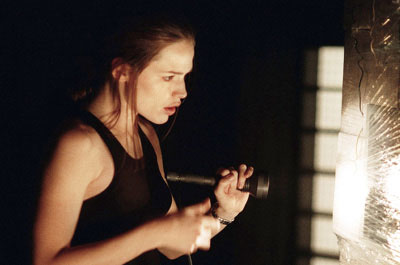
WARNER BROS./AF ARCHIVE/ALAMY
Asked how he’s able to do so many things—how he has the hours in a day—the affable Abrams remains humble. He says it’s all about delegating responsibilities and hiring the right people and then letting go.
“You work with people that you don’t have to do their job for them,” Abrams says. “You don’t want to micromanage people. Instead, you just watch them do what they should be doing and help whenever you can.”
Abrams has been at the forefront in casting his projects with actors who reflect the population and giving minorities jobs in his productions. In The Force Awakens, he put the spotlight on the resourceful woman Rey and her relationship with a black stormtrooper, FN-2187, aka Finn, who breaks ranks.
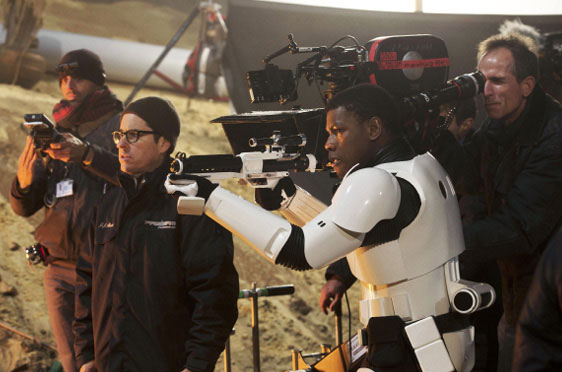
After the controversy surrounding the lack of minorities recognized at the Oscars last year, Abrams’ Bad Robot teamed with Creative Artist Agency and Warner Bros. and Paramount to require women and minorities be submitted for directing, writing and acting jobs in proportion to their representation in the U.S. population.
“We’re working to find a rich pool of representative, kick-ass talent and give them the opportunity they deserve and we can all benefit from,” Abrams told The Hollywood Reporter. “It’s good for audiences, and it’s good for the bottom line.”
The upcoming big screen project God Particle is directed by Nigerian-American filmmaker Julius Ohah. The film stars Gugu Mbatha-Raw and David Oyelowo.
Although Abrams has been making headlines for his renewed focus on making Hollywood more open to diversity, the truth is, he’s always done that. Casting for Felicity (The WB) included Felicity’s African-American friend Elena and her gay Latino Dean & DeLuca boss, Javier, which added a layer of authenticity often lacking in other TV series set in ethnically diverse cities. Abrams attempted a romantic dramedy with two black leads in Undercovers, a 2010 NBC series that lasted only a few episodes. The show made headlines when casting Mbatha-Raw and Boris Kodjoe in the roles of a married couple and reactivated former CIA operatives. Abrams says the history of diversity was one of the main draws of Star Trek, too.
Networking comes easily for Abrams, who learned early on the importance of gaining a circle of strong, creative friends and acquaintances. He’s known to collaborate with childhood pals such as actor Greg Grunberg, whom he’s known since kindergarten, and Matt Reeves, his collaborator on Felicity as well as on Cloverfield and 10 Cloverfield Lane. Abrams and Reeves met while appearing on a public-access TV show as children. During filming, they shot short 8 mm films, presenting them at an 8 mm film festival when the two were 15. A Los Angeles Times article on the festival, with a picture of Abrams and Reeves, caught the attention of Steven Spielberg. Although Abrams didn’t meet the famous filmmaker at that time, the two teens were hired for $300 to clean and repair some of the recently discovered 8 mm films Spielberg made as a teenager.
***
The idea behind Fringe’s reformed mad scientist Walter was formed long ago in the basement of Abrams’ grandfather, Harry Kelvin, who owned an electronics business. Fans know that Abrams often sprinkles his projects with Easter eggs pointing to his beloved granddad. Growing up, Abrams spent a lot of time with his mom’s father, discovering how electricity worked, along with other science mysteries.
“I’ve always felt drawn to stories about eccentric, creative types in a basement lab or building things out of raw materials,” Abrams told me in an interview a few years ago. “As crazy as these guys may seem, I feel connected to that feeling of that laboratory, working on things and taking chances.”
The multihyphenate Abrams may have been taught to stretch boundaries by his mom, a Peabody-Award-winning producer for Disney Channel’s The Ernest Green Story. She was also a real estate agent and wrote young adult books. His father is Emmy-nominated TV producer Gerald W. Abrams, and his sister, Tracy Rosen, also became a TV screenwriter.
Abrams has often said that the best piece of advice he was ever given was from his father. Young J.J. wanted to attend film school after graduating from Palisades High School in 1984.
“He said it was more important to go off and learn what to make movies about than how to make movies,” Abrams has said. “It really did inform my storytelling, my awareness of different groups and things I would never be aware of if I’d stayed in Los Angeles.”
Abrams enrolled in Sarah Lawrence College and began writing comedy scripts. During his final year as an undergrad, he co-wrote a screenplay with Jill Mazursky that became the 1990 comedy Taking Care of Business, starring James Belushi and Charles Grodin.
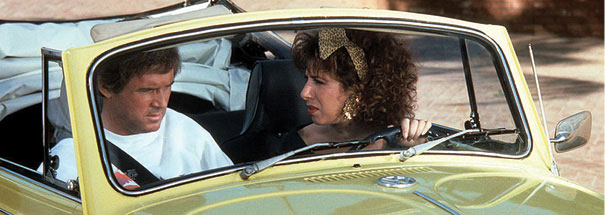
HOLLYWOOD PICTURES/GETTY IMAGES
Then known as Jeffrey Abrams, he had grown up around show business; and Mazursky, the daughter of lauded filmmaker Paul Mazursky (An Unmarried Woman), sold the script, which met with tepid response from both critics and audiences. Yet Abrams was able to parlay that into a springboard for his next projects: Regarding Henry, starring Harrison Ford, and Forever Young, starring Mel Gibson.
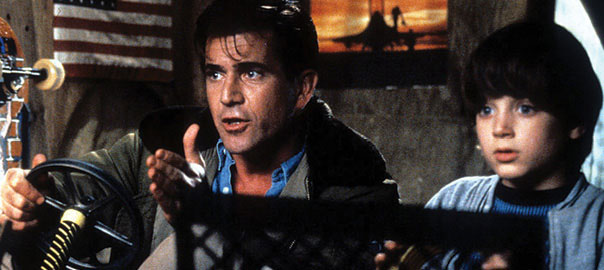
WARNER BROS./GETTY IMAGES
Along the way, he says he’s also learned that “your voice is as important as anyone else’s.”
“I needed to learn that if there’s something you really feel, other people do, too.”
You may not always be right and you shouldn’t be cocky about it….” Abrams says. “[But] that thing that you feel, if you really feel it, other people do, too.”
Abrams talks a lot about his gut, and what it tells him is the right thing to do. Within that context, however, Abrams says he is most happy when he starts a project with boundaries. He has often said that when he got the call from then ABC entertainment chief Lloyd Braun about making a Survivor-like drama about castaways, it gave him a starting point. And then things got weird.
But first, there were boundaries.
One of my first interviews with Abrams was back when he was doing Felicity and the series was just wrapping. Like the reporter who charged the stage to find out Rey’s true parentage, I yearned to know what was in Meghan’s wooden mystery box. (For those familiar with the series, Meghan was Felicity’s goth New York roommate who kept a mystery box and warned Felicity never to open it unless she wanted to be cursed the rest of her life.) Abrams decided to pay homage to his childhood favorite TV series, The Twilight Zone, and showed Felicity stuck in a room with the other TV characters. At the end of her dream, the room turned out to be Meghan’s box, with dolls representing the main characters. So perhaps Meghan was the puppet master and Felicity was just a dream? Seems a bit like the controversial Lost finale.
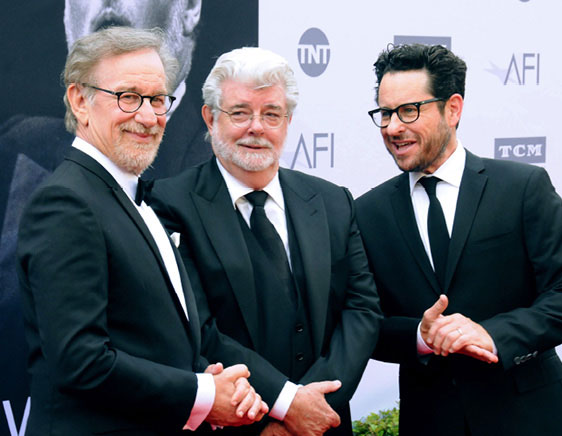
BARRY KING/GETTY IMAGES
The unsatisfying answers to the Felicity and Lost mysteries make Abrams even more adamant that storytelling is about the journey rather than the destination. It can also be a metaphor for how Abrams deals with life. He moves from one project to the next, not worried about the ending, only how to progress through the storyline.
He still hasn’t opened his own mystery box. Maybe he never will.
“It doesn’t matter what’s in the box; it only matters that there’s a box and there’s a mystery,” Abrams says. “Sometimes, mystery is more important than knowledge.”
Related: 6 Ways to Tap Into Your Creative Self
This article originally appeared in the February 2017 issue of SUCCESS magazine.


